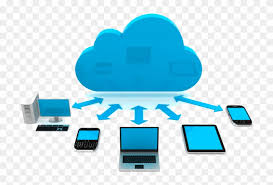
Unleash the Power of the Cloud with JVC: Elevating Your Digital Future
Welcome to JVC, where innovation meets reliability in the cloud. At JVC Cloud Services, we’re dedicated to empowering businesses of all sizes to thrive in the digital age. With a mission to transform the way you work and store data, we offer cutting-edge cloud solutions that drive efficiency, security, and growth.


Cloud Hosting
Cloud hosting is a scalable and flexible web hosting solution that utilizes virtual servers distributed across data centers to host digital content.
Learn More
Cloud Storage
Cloud storage is a service that allows users to store and access their data, files, and documents on remote servers over the internet, providing data redundancy, accessibility, and scalability.
Learn More
Data Analytics
Data analytics involves the use of techniques and tools to analyze, interpret, and derive meaningful insights from data, helping organizations make informed decisions and optimize their operations.
Learn More
Disaster Recovery
Disaster recovery is a strategic plan and set of processes for restoring critical business operations and data after a disruptive event, such as a natural disaster or cyberattack, to minimize downtime and data loss.
Learn MoreSecurity Measures for Protecting Client Data

Certainly! IaaS, PaaS, and SaaS are three distinct categories of cloud computing services, each offering different levels of control and management to users. Let me explain each of them:
IaaS (Infrastructure as a Service):
Description: IaaS is the lowest-level cloud service and provides virtualized computing resources over the internet. It essentially offers a cloud-based infrastructure that allows users to rent virtual machines, storage, and networking resources on-demand.
Characteristics:
Users have full control over virtual machines and can install their choice of operating systems and software.
IaaS is highly scalable, allowing users to scale resources up or down based on their needs.
Users are responsible for managing the virtual machines, including security, updates, and maintenance.
Use Cases: IaaS is commonly used for hosting applications, websites, and development and testing environments. It’s suitable for businesses that require flexibility and control over their IT infrastructure.
PaaS (Platform as a Service):
Description: PaaS is a higher-level cloud service that provides a platform and environment for developers to build, deploy, and manage applications without worrying about the underlying infrastructure.
Characteristics:
Users can focus on writing code and developing applications while the PaaS provider handles infrastructure management, including servers, databases, and runtime environments.
PaaS offerings often include tools and services for application development, such as databases, development frameworks, and deployment automation.
It abstracts many infrastructure details, making it easier for developers to create and deploy applications.
Use Cases: PaaS is ideal for software developers and development teams looking to streamline the application development process. It’s suitable for building web and mobile applications, APIs, and microservices.
SaaS (Software as a Service):
Description: SaaS is a cloud service that delivers software applications over the internet on a subscription basis. Users access the software through a web browser, and the software is hosted and maintained by the SaaS provider.
Characteristics:
Users do not need to install or manage software; they can access it from anywhere with an internet connection.
SaaS applications are typically multi-tenant, meaning multiple users or organizations share the same software instance.
Updates, security, and maintenance are the responsibility of the SaaS provider.
Use Cases: SaaS is commonly used for a wide range of applications, including office productivity software (e.g., Microsoft 365, Google Workspace), customer relationship management (CRM) tools, email services, and more. It’s suitable for businesses and individuals looking for convenient and cost-effective software solutions.
Cloud Security

Cloud security refers to the measures and practices employed to protect data, applications, and infrastructure in cloud computing environments from cyber threats and vulnerabilities.
Security Features

An in-depth explanation of the security measures you have in place to protect client data, including:
- Encryption
- Access controls
- Compliance certifications

Encryption:
Data Encryption at Rest: Client data is encrypted when it’s stored on servers or in databases. This ensures that even if unauthorized access occurs, the data remains unreadable without the appropriate decryption keys.
Data Encryption in Transit: All data transmitted between a client’s device and the organization’s servers is encrypted using secure protocols such as TLS (Transport Layer Security). This prevents interception and eavesdropping during data transmission.
Access Controls:
Role-Based Access Control (RBAC): Access to client data is strictly controlled based on roles and responsibilities. Only authorized personnel have access to specific data sets, and their access privileges are determined by their job functions.
Multi-Factor Authentication (MFA): To enhance security, employees and authorized users may be required to use MFA, which typically involves something they know (password) and something they have (e.g., a smartphone app) for authentication.
Audit Trails: Detailed logs are maintained to track who accessed client data, when, and what actions were taken. This allows for monitoring and accountability.
Compliance Certifications (if applicable):
ISO 27001: An internationally recognized certification for information security management systems (ISMS), ensuring that the organization follows best practices for information security.
HIPAA (Health Insurance Portability and Accountability Act): Required for healthcare organizations, it sets standards for protecting sensitive patient information.
PCI DSS (Payment Card Industry Data Security Standard): Necessary for organizations handling credit card transactions to protect cardholder data.
GDPR (General Data Protection Regulation): Applies to organizations handling personal data of European Union citizens and requires stringent data protection measures and consent management.
Data Backups and Disaster Recovery:
Regular data backups are performed, and disaster recovery plans are in place to ensure data availability and integrity in case of unexpected events like hardware failures or natural disasters.
Vulnerability Assessment and Patch Management:
Regular vulnerability assessments are conducted to identify and address potential security weaknesses. Software and systems are kept up to date with security patches to mitigate known vulnerabilities.
Employee Training and Awareness:
Employees are trained on security best practices, data handling policies, and how to recognize and respond to security threats like phishing attempts.
Physical Security:
Physical security measures are implemented to protect data centers and server rooms from unauthorized access, including biometric locks, surveillance cameras, and controlled access.
Incident Response Plan:
An incident response plan outlines procedures to follow in case of a security breach or data incident. This includes steps for containment, investigation, communication, and recovery.
Regular Security Audits and Testing:
Periodic security audits and penetration testing are performed to assess the effectiveness of security measures and identify potential vulnerabilities.
-
1
-
2
-
3